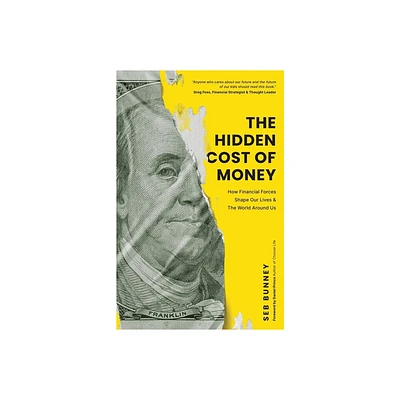Home
Land of the Fee: Hidden Costs and Decline American Middle Class
Loading Inventory...
Barnes and Noble
Land of the Fee: Hidden Costs and Decline American Middle Class
Current price: $30.99


Barnes and Noble
Land of the Fee: Hidden Costs and Decline American Middle Class
Current price: $30.99
Loading Inventory...
Size: Hardcover
*Product Information may vary - to confirm product availability, pricing, and additional information please contact Barnes and Noble
The loans ordinary Americans take out to purchase homes and attend college often leave them in a sea of debt. As Devin Fergus explains in
Land of the Fee
, a not-insignificant portion of that debt comes in the form of predatory hidden fees attached to everyday transactions. Beginning in the 1980s, lobbyists for the financial industry helped dismantle consumer protections, resulting in surreptitious fees-often waived for those who can afford them but not for those who can't. Bluntly put, these hidden fees unfairly keep millions of Americans from their hard-earned money.
Journalists and policymakers have identified the primary causes of increasing wealth inequality-fewer good working class jobs, a rise in finance-driven speculative capitalism, and a surge of tax policy decisions that benefit the ultra-rich, among others. However, they miss one commonplace but substantial contributor to the widening divide between the rich and the rest: the explosion of fees on every transaction people make in their daily lives.
traces the system of fees from its origins in the deregulatory wave of the late 1970s to the present. The average consumer now pays a dizzying array of charges for mortgage contracts, banking transactions, auto insurance rates, college payments, and payday loans. These fees are buried in the pages of small-print agreements that few consumers read or understand. Because these fees do not fall under usury laws, they have redistributed wealth to large corporations and their largest shareholders. By exposing this predatory and nearly invisible system of fees,
reshapes our understanding of wealth inequality in America.
Land of the Fee
, a not-insignificant portion of that debt comes in the form of predatory hidden fees attached to everyday transactions. Beginning in the 1980s, lobbyists for the financial industry helped dismantle consumer protections, resulting in surreptitious fees-often waived for those who can afford them but not for those who can't. Bluntly put, these hidden fees unfairly keep millions of Americans from their hard-earned money.
Journalists and policymakers have identified the primary causes of increasing wealth inequality-fewer good working class jobs, a rise in finance-driven speculative capitalism, and a surge of tax policy decisions that benefit the ultra-rich, among others. However, they miss one commonplace but substantial contributor to the widening divide between the rich and the rest: the explosion of fees on every transaction people make in their daily lives.
traces the system of fees from its origins in the deregulatory wave of the late 1970s to the present. The average consumer now pays a dizzying array of charges for mortgage contracts, banking transactions, auto insurance rates, college payments, and payday loans. These fees are buried in the pages of small-print agreements that few consumers read or understand. Because these fees do not fall under usury laws, they have redistributed wealth to large corporations and their largest shareholders. By exposing this predatory and nearly invisible system of fees,
reshapes our understanding of wealth inequality in America.


















